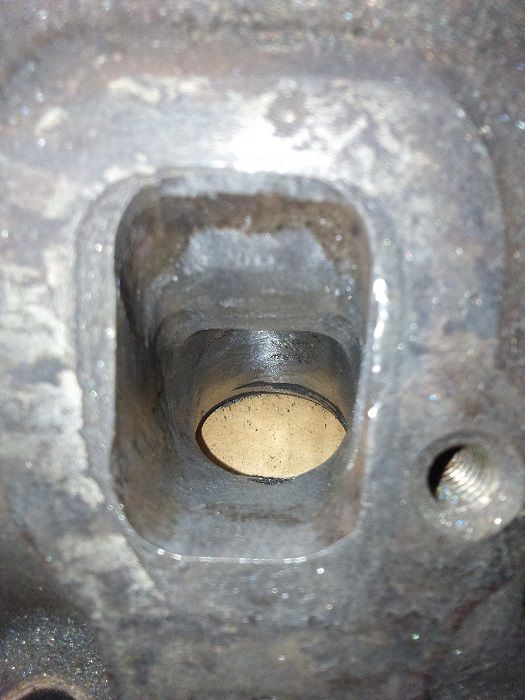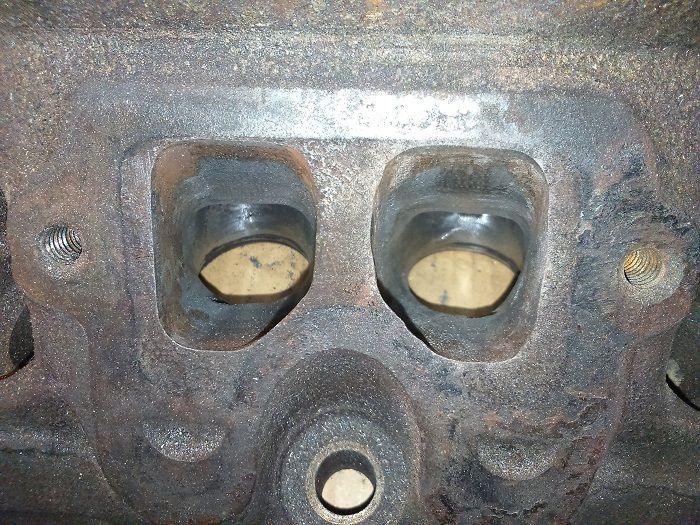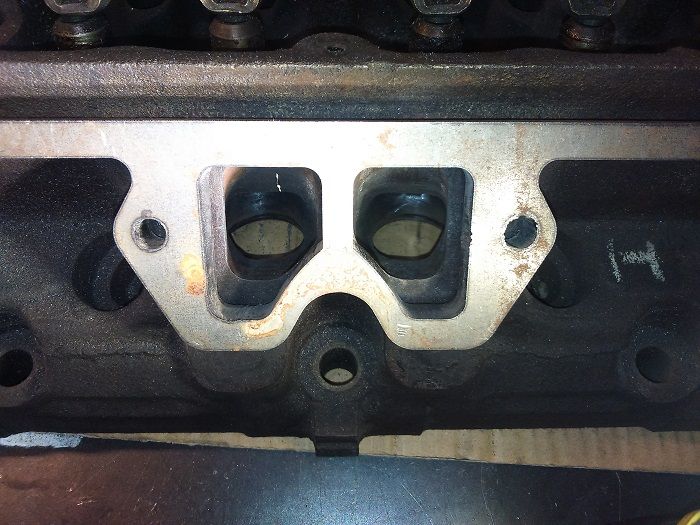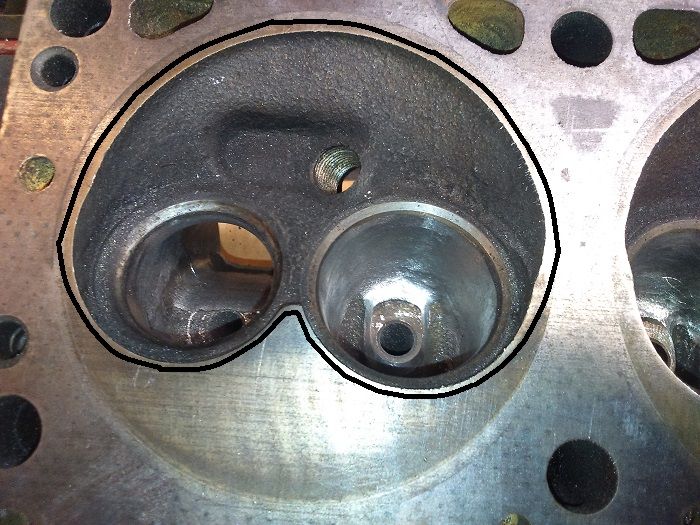I'm going to rebuild my 318 with desire to have much torque from idle and up. I want the engine to be strong and have relative good mpg, after that I want it to be "fast". So in that order I have choosed my parts to suit my needs.
I have bought:
KB167 30 over pistons
Scat I beam rods
302 heads
Comp Cams XE250H
Home made "Hedman Tight tubes"
Street Demon 625 cfm carb
When I bought the cam I was thinking of putting it on a stock 318. But that never happened so know I think the cam is on the tipping point on not to run it. Going to zero deck the block so I can utilize good quench. Haven't cc the heads but since I probably need to resurfacing the heads I haven't done it yet. And when I play around with diffrent quench distance and different chamber size I'm getting somewhere between 9.5:1 - 10:1 in static compression. And when I use those numbers in a dynamic compression calculator and set the cam as the specs I'm getting numbers between 8.27:1 - 8.72:1 DCR. I think those number are on the high side after reading on the subject. What do you think?
For know I'm going to run 2.76 in the rear and I have bought a lower first and second gear for my 904 to have lower cruise rpm but stil help take of. I know a bigger cam would need lower gear in the rear and therefor bad for MPG in the theory. I know I need to compromise since I cant have all my goals to the extreme at once, but I hope I can maybe make it work or do I need to change to the XE262H cam? But then I will give up some mpg and down low torque? Can I maybe retard the cam timing to help bleed of some cylinder pressure to lower my DCR?
I have start to do some minor "porting", cleaning and matching on my 302 heads. In the after math I maybe started to soon before knowing all that I wanted to have answer to before start grinding. Didn't know that the swirl was in the bowl and I have already remove some material in the bowls on one head. I think I want the swirl effect for my build and I hope I haven't ruin the advantage of running the 302 heads with how I have grinded the bowl. My horsepower goal just to put it there for some reference how I think and want it, I hope it will do somewhere between 275-300 hp at crank. But the torque, good mpg together with the engine and it's parts working together very optimised is my main goal. Don't know if it's doable with my part choices and if I'm dreaming to much.
Here some picture of my heads so far:
The untouched head exhaust port.
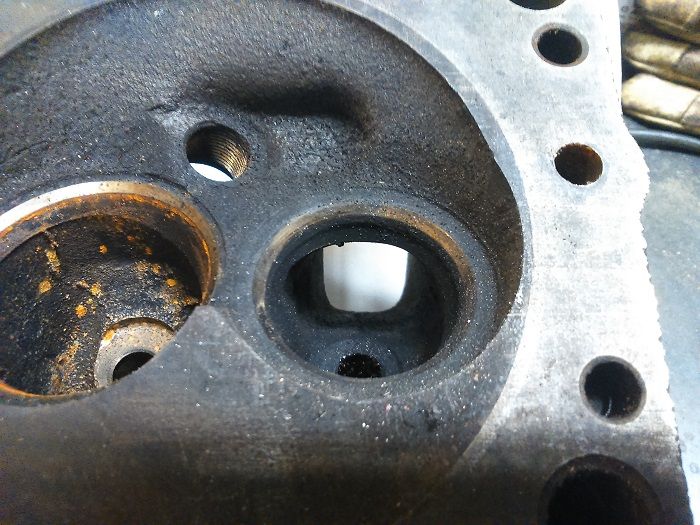
The grinded exhaust port.

The untouched head intake port.

The grinded intake port.
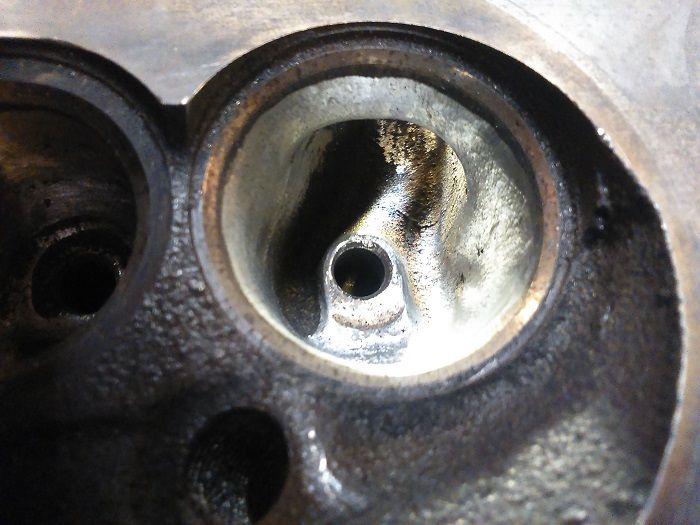
I'm not done completely with the head I started on since I'm taking it slow to only clean up and make it smoother and wider in some spots like in the thread 1wild&crazyguy started. What do you guys think and do someone have any good tips or opinions for me to do?
Thanks FABO
I have bought:
KB167 30 over pistons
Scat I beam rods
302 heads
Comp Cams XE250H
Home made "Hedman Tight tubes"
Street Demon 625 cfm carb
When I bought the cam I was thinking of putting it on a stock 318. But that never happened so know I think the cam is on the tipping point on not to run it. Going to zero deck the block so I can utilize good quench. Haven't cc the heads but since I probably need to resurfacing the heads I haven't done it yet. And when I play around with diffrent quench distance and different chamber size I'm getting somewhere between 9.5:1 - 10:1 in static compression. And when I use those numbers in a dynamic compression calculator and set the cam as the specs I'm getting numbers between 8.27:1 - 8.72:1 DCR. I think those number are on the high side after reading on the subject. What do you think?
For know I'm going to run 2.76 in the rear and I have bought a lower first and second gear for my 904 to have lower cruise rpm but stil help take of. I know a bigger cam would need lower gear in the rear and therefor bad for MPG in the theory. I know I need to compromise since I cant have all my goals to the extreme at once, but I hope I can maybe make it work or do I need to change to the XE262H cam? But then I will give up some mpg and down low torque? Can I maybe retard the cam timing to help bleed of some cylinder pressure to lower my DCR?
I have start to do some minor "porting", cleaning and matching on my 302 heads. In the after math I maybe started to soon before knowing all that I wanted to have answer to before start grinding. Didn't know that the swirl was in the bowl and I have already remove some material in the bowls on one head. I think I want the swirl effect for my build and I hope I haven't ruin the advantage of running the 302 heads with how I have grinded the bowl. My horsepower goal just to put it there for some reference how I think and want it, I hope it will do somewhere between 275-300 hp at crank. But the torque, good mpg together with the engine and it's parts working together very optimised is my main goal. Don't know if it's doable with my part choices and if I'm dreaming to much.
Here some picture of my heads so far:
The untouched head exhaust port.

The grinded exhaust port.

The untouched head intake port.

The grinded intake port.

I'm not done completely with the head I started on since I'm taking it slow to only clean up and make it smoother and wider in some spots like in the thread 1wild&crazyguy started. What do you guys think and do someone have any good tips or opinions for me to do?
Thanks FABO

